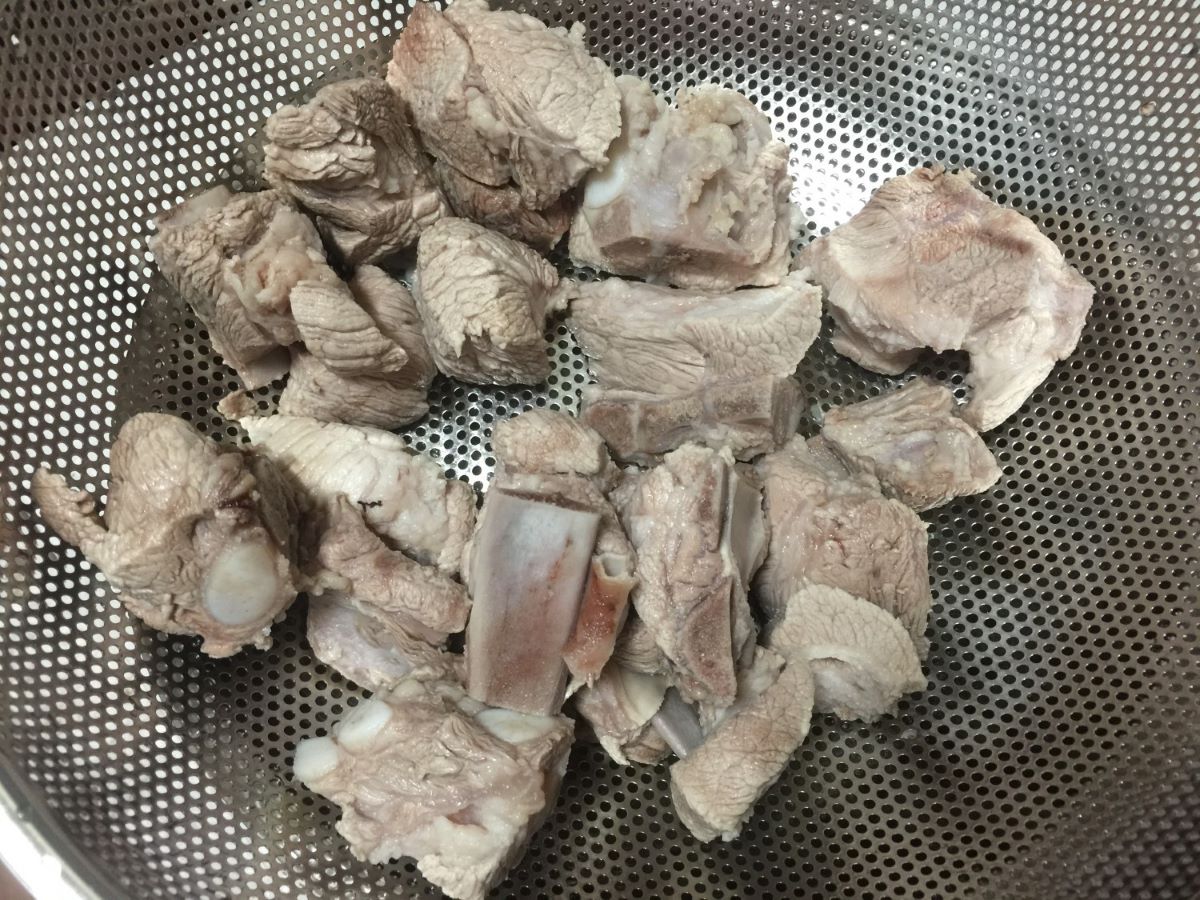Blanching is an essential first step when cooking pork ribs that makes them incredibly tender, enhances their flavor, and allows seasonings to penetrate the meat better. While an extra step, taking the time to properly blanch ribs before cooking pays off in the end with finger-licking results
Why Blanching is Key for Great Ribs
Blanching ribs provides several benefits
-
Removes impurities and debris. Blanching helps rinse away any bone fragments, blood, or grime on the ribs, resulting in a cleaner flavored end product.
-
Attenuates “porky” flavors. Some pork can have a strong, gamy taste. Blanching mellows this out.
-
Makes the meat more tender. The short boil helps break down connective tissues and collagen.
-
Allows seasonings to penetrate better. Blanching opens up the meat structure so spices and sauces absorb better.
-
Enhances natural flavor. Blanching deepens the pork flavor and improves how well it takes on seasoning.
-
Improves texture. The ribs become incredibly tender without compromising the structural integrity of the meat.
While it adds a short extra step, blanching is worthwhile for making ribs more palatable, tender and flavorful.
How to Blanch Ribs the Right Way
Blanching ribs is a simple process. Here is a step-by-step guide:
Ingredients Needed
-
Pork ribs – Look for meaty, well-marbled ribs with a nice layer of fat on top. Avoid thin or overly bony ribs.
-
Large pot – Use a stockpot or other deep, large pot to fully submerge the ribs.
-
Water – Use cold water, not already boiling. Start with enough to cover ribs.
-
Colander – For draining after blanching.
-
Seasonings (optional) – Salt, sugar, garlic, ginger, scallions to flavor the water.
Step-by-Step Blanching Method
-
Prep the ribs – Rinse, pat dry, trim excess fat or membranes. Cut ribs into segments if needed to fit pot.
-
Fill pot with cold water – Place ribs in pot, cover with cold water by 1 inch. Add seasonings if desired.
-
Bring water to a boil – Place pot on high heat, cover and bring to a rolling boil. Skim any scum off the top.
-
Blanch the ribs – Once boiling, let ribs blanch for 3-5 minutes, no longer. Keep skimming off scum.
-
Drain and cool – Drain ribs immediately in a colander and rinse with cool water to stop cooking. Let sit 10-15 minutes before cooking.
Blanching Times
Blanching time varies slightly depending on rib type:
-
Baby back ribs – Blanch for 3 minutes since they are smaller.
-
Spareribs – Blanch meaty spareribs for 4-5 full minutes.
-
Country-style ribs – These meaty ribs may need the full 5 minutes.
-
Rib tips – Blanch small tips for just 2-3 minutes.
For meatier ribs allow 5 minutes, smaller ribs less time. Avoid over-blanching which can make them mushy.
Maximizing Flavor
For the best flavor, blanch in a seasoned liquid instead of plain water. Consider adding:
-
Soy sauce – For Asian-style ribs.
-
Vinegar – White or rice vinegar.
-
Garlic and ginger – Essential aromatics.
-
Onions and scallions – Heighten savory umami taste.
-
Spices – Cinnamon, star anise, cloves.
-
Herbs – Rosemary, thyme, parsley.
-
Sugar – Tenderizes and balances flavor.
Letting the ribs blanch in a flavorful liquid infuses them with taste before final cooking.
Cooking Blanching Ribs to Perfection
Once blanched, the ribs just need finishing cooking. Popular cooking methods include:
-
Braising – Braise in sauce, stock or beer for fall-off-the-bone texture.
-
Grilling – Get smoky flavor and char by finishing on the grill.
-
Roasting – Roast at 350°F until browned and tender.
-
Smoking – Perfect for big outdoor smoked ribs.
-
Stewing – Simmer in a flavorful stew with vegetables until done.
Thanks to proper blanching first, the ribs will come out moist, tender and full of flavor no matter how you finish cooking them.
Troubleshooting Blanching Problems
Having issues getting blanched ribs just right? Here are some quick fixes:
-
Ribs are tough and chewy – Increase blanching time to 5 full minutes. Ensure water is boiling.
-
Ribs fall apart – Reduce blanching time for more delicate ribs. Don’t over-boil.
-
Ribs are bland – Use a seasoned blanching liquid, not plain water.
-
Ribs have off flavors – Fully skim scum during blanching and discard used liquid after.
-
Pot is overcrowded – Blanch ribs in batches so all are fully submerged.
With this complete guide, you can master the art of blanching pork ribs for the most tender, flavorful results every time. The small amount of extra effort pays off with amazing texture and taste. Give it a try before your next rack of ribs!

Step 1: Prepare the Ribs
Start by rinsing the pork ribs under cold water to remove any surface impurities. Then, use a sharp knife to trim off any excess fat or membrane from the ribs. This will help improve the overall texture and flavor of the final dish.
Step 5: Dry the Ribs
Once the ribs are cool from the ice bath, take them out and pat them dry with paper towels. There is a better chance that the ribs will brown evenly when you grill, roast, or braize them if you dry them first.
How to do meat blanching correctly 如何正确汆烫肉类
FAQ
How long should I blanch pork ribs?
How do you blanch pork ribs for soup?
What does blanching pork do?
